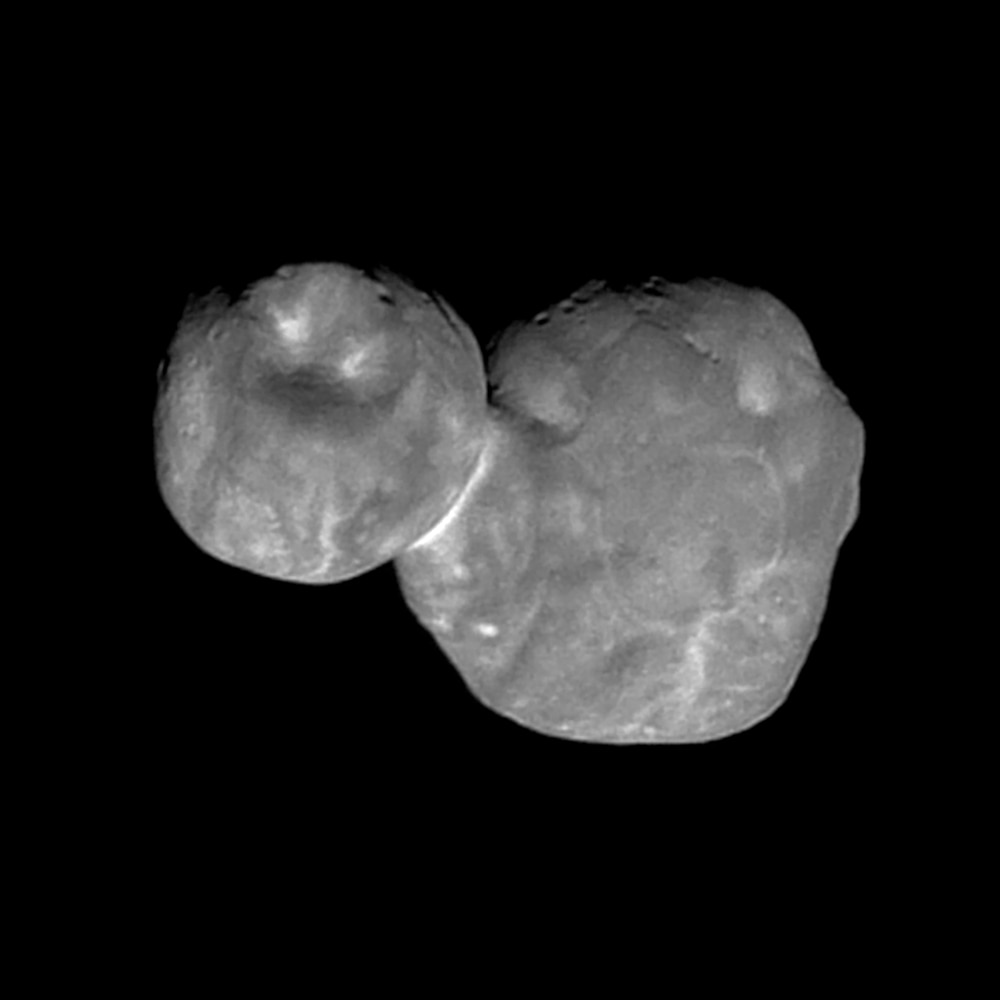Create a free profile to get unlimited access to exclusive videos, sweepstakes, and more!
NASA's newest image of Ultima Thule is even more hi-res

NASA might have not promised us jetpacks, but when the image of Ultima Thule that wowed the planet was released on New Year’s Day, they did promise something more HD. And we got that HD pic very shortly thereafter, but now we have an even better one.
What you’re looking at here is the clearest image yet of Kuiper Belt Object 2014 MU69, or Ultima Thule (which is looking more and more like BB-8 every time the resolution gets sharper), which New Horizons beamed back almost a month ago. To think that human eyes are seeing an ancient object 4.13 billion miles out in the solar system—which also happens to be the first KBO ever explored by a spacecraft—is pretty amazing.
"This new image is starting to reveal differences in the geologic character of the two lobes of Ultima Thule, and is presenting us with new mysteries as well," said New Horizons Principal Investigator Alan Stern in a blog post. "Over the next month there will be better color and better resolution images that we hope will help unravel the many mysteries of Ultima Thule."
New Horizons’ hypersensitive Ralph instrument captured this glamour shot with its wide-angle Multicolor Visible Imaging Camera (MVIC) component. It's capable of viewing anything from the visible spectrum to the otherwise invisible infrared. Ralph mostly uses its superhero sight to map the surface geology and composition of objects like Ultima Thule, though it can also look into their atmosphere.
Though it might look like a quasi-closeup, this image was actually taken when New Horizons was 4,200 miles away from Ultima, 7 minutes before it most closely approached the object. It was also a blur before being transmitted to Earth. At 440 feet per pixel, the original resolution was nowhere near as clear as this. The spacecraft stored this vision of the KBO in its data memory until the image was received back on Earth Jan. 18-19 and scientists gave it a makeover.
While the process that was used to sharpen the image, deconvolution, does amp the graininess when viewed at high contrast, that and the oblique lighting have revealed things about Ultima’s topography that were not easily seen before. Many small pits up to 0.4 miles in diameter are now showing themselves along the day/night boundary, otherwise known as the terminator, near the top of the object.
What may appear like BB-8’s face on the smaller of Ultima’s lobes is 4 miles across and thought to be a deep depression. Could this—and the multiple pits—be evidence of some intense impact billions of years ago? We don’t know yet. They might be, but they also could have been areas that collapsed when volatile materials were released. Another thing that is unclear is the origin of those light and dark patterns. Those, especially the bright “collar” where the two lobes are joined, could eventually unearth how Ultima formed.
NASA still promises more, even clearer shots from New Horizons, which is whizzing through space at 31,500 mph. We just have to be patient, since it takes 6 hours and 9 minutes for a radio signal from the spacecraft to touch down on Earth. That isn’t too bad when you’re over 4 billion miles from the home planet.
Will Ultima Thule reveal its ancient secrets in future images? Will it end up looking even more like BB-8? Space geeks and Star Wars fans will just have to wait.
(via NASA)



























